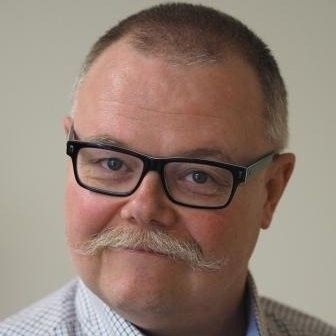Helping the Merchant Genius CEO
The owner/CEO wanted to take advantage of an opportunity. To him, a downturn was always an opportunity. This overstock garment reseller created a retail system that efficiently put low cost but high-quality garments into urban communities. Downturns put new products “on sale” to sell. Downturns pressured retailers to close stores, putting leases “on sale”.
This CEO wanted to keep his cash “powder dry” to take advantage of opportunities he knew would happen in the coming economic downturn he saw. He saw the opportunity for rapid growth in sales and in new stores. His management team wanted to move the company offices and distribution center into a larger and newer building.
There was a conflict between management and ownership. To resolve the issue and make sure that “all stones are turned over” this CEO wanted outside analysis from someone who could be totally objective. What started as a feasibility study became a multi-project journey working with the owner I called the Merchant Genius.
“Should we stay or should we go?”
In the first meeting with the CEO over breakfast in a South Jersey diner, the CEO launched immediately into the heart of the problem.
“I don’t know if we should stay or we should go,” said the CEO before the coffee arrived. The CEO spoke about the downturn he smelled in the air, and how overleveraged leveraged companies would be “falling like flies” and how he expected his business to gain. As the retailers “went broke” fresh merchandise would become available as low as 10% - 20% of original cost. He talked about the stores that he suspected would fall (and did fall). “I want to keep as much dry powder as possible to scoop up the deals.”
The lease for his combination office and warehouse ended in 8 months. He wanted to stay put. A move would consume capital that he wanted at the ready for merchandise and potentially new retail locations taking over distressed leases. He wanted to work the lease down or get some tenant improvement money. Knowing that the current owners had the property on the market, it was a good time to lock in a better lease rate.
The management team wanted to move to a bigger building. The operations team felt that they had “run out of space.” The management team located a building with substantial warehouse capacity, but it also required substantial office construction. The CEO did not want to invest in that move. The CEO agreed that the warehouse was busting out and needed help but from a better layout, not a new building. He was willing to purchase more rack and invest in a new warehouse layout, but not much more.
Working the Plan
Our team invested several days on the warehouse floor to learn the operations, gather information and determine the issues. We interviewed, observed, and performed some of the work to gain understanding. We developed data to validate or calibrate systems data – to understand the relationships between processes and costs. We studied the processes, and what process change required for success. We quickly determined that meaningful process change required too much time; the current processes ingrained into the limitations of the systems and the inventory philosophy.
We developed a requirements model, working with the CEO and CFO to forecast future growth. We looked out over 5 years in yearly snapshots of the model, guiding investment timing. “If you don’t need the capacity now, but will in two years – why invest now?
We analyzed several options, developing block layouts, calculating capacity and investment cost. We developed three options, one in a new building, the two retrofits of the existing building. To help present the project, we created a 3-dimensional model of the existing building options. By this time both the CEO and his management team agreed that the best option was to stay put.
Now we needed to negotiate the new lease. For every meeting with the landlord, the CEO held the meeting in a large conference room. The models and plans for the three options sat on tables along one side of the room, in plain view. The CEO made sure to talk about the plans and about the benefits of a new space. The landlord saw the other two models with the retrofits and offered to support those changes.
In the end, the company remained in that location for another five years. The downturn the CEO expected, the 2008 Financial Crisis and resulting recession, happened, bringing the opportunities to scoop up first quality merchandise at incredibly low prices. By not moving, the company made the largest profit in 2009 than it had in its entire history.
Engagement:
90 Day Duration
30 Days of Effort
Deliverables:
Assessment, Design Criteria, Handling Concepts, New Building Design, Existing Building Retrofit Options, Conceptual Drawings, Three Dimension Model of Existing Building Options
Investment:
$45,000 in fees
ROI:
+10X
How does your vision of the future differ from those who report to you? Are you looking for ways to better deploy company working capital? We help CEO's and executives assess the options, uncovering alternatives that you may not have thought of. What do you think that you are missing? Give us a call to find out.
 Hello! My name is Dave Schneider, I'm the founder and publisher of We Are The Practitioners.
Hello! My name is Dave Schneider, I'm the founder and publisher of We Are The Practitioners.
It is a complex world. We help simplify it. I'd love to help you simplify your business supply chain challenges.
Give me a call anytime at 877-674-7495
David K Schneider & Company - We Are The Practitioners.com - The Hornbaker Works
9026 Hornbaker Road, Manassas, VA 20109 - PO Box 230457, Centreville, VA 20120
info@ DKSCO1.COM - (877) 674-7495


